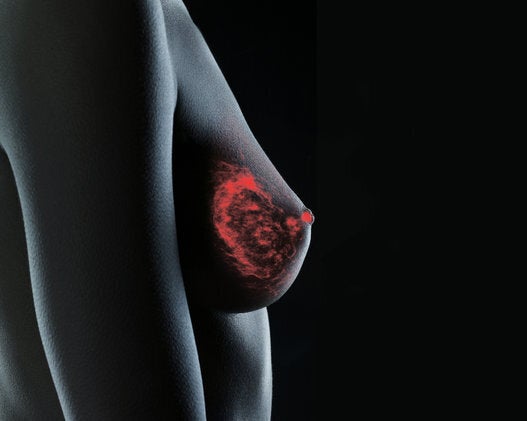
When it comes to breast cancer, leading science is redirecting our race for the cure to a journey of prevention and risk modification.
Breast cancer results from uncontrolled growth of breast cells. About one in eight Canadian women will develop invasive breast cancer over the course of her lifetime. Only 20 per cent of women diagnosed with breast cancer have a family history of breast cancer and known gene mutations (such as BRCA1 and BRCA2) account for only five to eight per cent of cases. This means that most breast cancers occurs in women without a family history.
Women living in the U.S. have a ten-fold greater risk of dying from breast cancer as compared to women living in Thailand. When women migrate from areas with a low incidence of breast cancer (i.e. Asia) to North America their breast cancer risk increases. These facts suggest that environment, diet and lifestyle play an important role in shaping risk and combine with our genetic predispositions to determine our health, aging and risk of chronic disease and cancer.
Breast biology is largely determined by hormonal and tissue factors. Estrogen is the dominant hormonal signal stimulating the breast and in more differentiated cancers the most common hormonal trigger for metastatic spread. Other tissue factors such as inflammation and injury (chemical, physical or radiation) can also increase risk.
The transformation of a normal breast cell to a cancer cells often proceeds the diagnosis by seven years. During this critical window, early breast cancer remains below the detection limit of our screening tests such as mammograms and physical exam. But in the early subclinical stage, there is the greatest possible impact of risk reduction and prevention through hormone balance, estrogen metabolism and detoxification support and anti-inflammatory, anti-oxidative therapy.
The following six steps provide a complete plan for breast healthy living:
1. Balance your hormones
Through the menopause transition hormone levels fluctuate. In peri-menopause, estrogen increases while progesterone, which blocks estrogen's stimulatory effects, decreases. Unopposed estrogen is a potent stimulator of breast tissue and linked with hormone-sensitive breast cancer.
After menopause, there is a shift in the type of estrogen produced in the body. Ovarian estrogen falls and estrone, an estrogen converted in fat tissue by an enzyme, aromatase, from testosterone becomes the predominant form. Estrone can have more toxic effects when it binds the estrogen receptor and increase the risk of breast cancer and stroke.
Maintaining hormone balance throughout the transition can support breast health. By maintaining a health body weight and consuming nutrients including omega3, green tea extract (EGCG), chrysin and flavonoids, you can support hormone balance. Prescription medications called aromatase inhibitors such as letrozole work in treating and preventing breast cancer by inhibiting this enzyme.
2. Detox your estrogens efficiently
Detoxification and inactivation of estrogens is a complex process that occurs largely in the liver. The first phase of estrogen metabolism involves the cytochrome reactions to increase water solubility for elimination. The 2/16 ratio compares favourable to unfavourable metabolites and when found to be low in premenopausal women has been linked to an increased risk of breast cancer.
Phase 2 detoxification involves conversion of estrogen metabolites into a form that can be excreted by the kidneys. Methylation is one of the most important phase 2 processes that aids in the elimination and inactivation of potentially toxic estrogen metabolites. Women who are poor methylaters may be at increased risk of breast cancer due to accumulation of toxic intermediaries.
Dietary factors found in cruciferous vegetables, such as kale and broccoli are known to improve the 2-16 ratio and phase 2 conjugation. Cruciferous consumption (unlike total fruit and vegetable consumption) has been associated with reduced risk of lung, colon and breast cancer. The effect is dependent on variations within human genetics and the presence of the ideal gut flora needed to activate the protective compounds.
3. Maintain a healthy body weight and shape
Deep abdominal fat is most toxic to the body as it is metabolically active and triggers inflammation. Fat also is the major source of estrone production following menopause. Women who gain more than 50 pounds from age 18 years have double the risk of breast cancer after menopause. Whereas, women who lost weight after menopause had a lower risk.
4. Exercise regularly
Regular aerobic exercise reduces insulin resistance and body fat and independently can reduce the risk of breast cancer. Data from the Nurses Health Study has shown that even after a diagnosis of breast cancer, women who exercise enjoy better survival rates.
5. Avoid alcohol
Excessive consumption of alcohol is an important risk factor for breast cancer ranking after family history and obesity. Alcohol is a known liver toxin and impairs estrogen metabolism. Drinking more than three glasses per week increased the risk of breast cancer by five-fold in the Nurses Health Study.
6. Limit environmental exposure to xeno-estrogens and hormone disrupters
Over 85,000 chemicals have been produced and released into the environment since the end of the Second World War. Chemicals in industrial plastics, pesticides and herbicides (i.e. DDT) as well as colorants can bind to estrogen receptors. These hormone disrupters are called xeno-estrogens and have been linked to early puberty and breast cancer in women and infertility in men.
By consuming organically grown produce and reducing intake of red meat, which can bio-accumulate toxins, you can reduce your dietary exposure to xenoestrogens.
Regular screening for breast cancer enables early detection -- but not prevention. Screening mammograms have been shown to save lives. It is important to partake in regular screening programs involving mammograms every one to two years after menopause. But there is growing interest and demand for prevention.
Differing rates of breast cancer across the globe suggests lifestyle factors play an important role in shaping risk. Following this six-step breast healthy plan can help shape risk so as to prevent breast cancer. An ounce of prevention is worth a pound of cure.
Follow HuffPost Canada Blogs on Facebook
Also on HuffPost:
